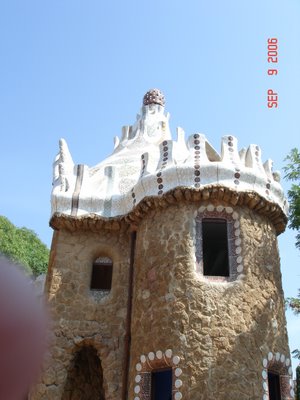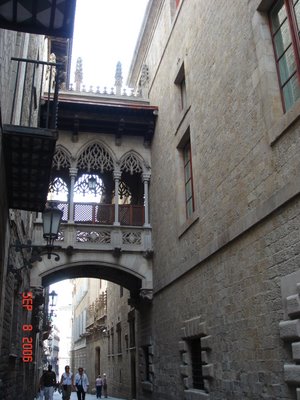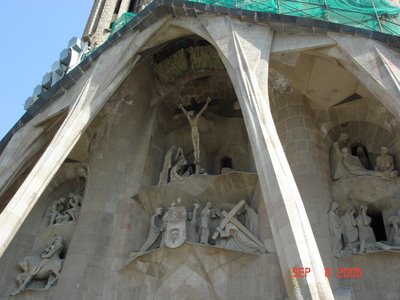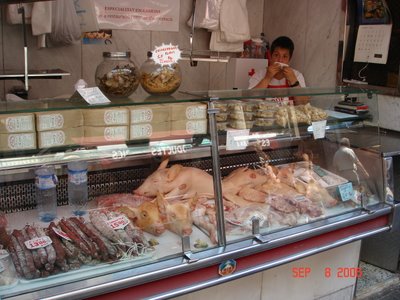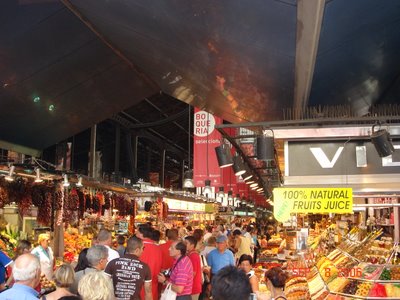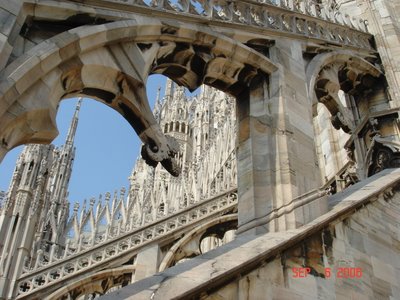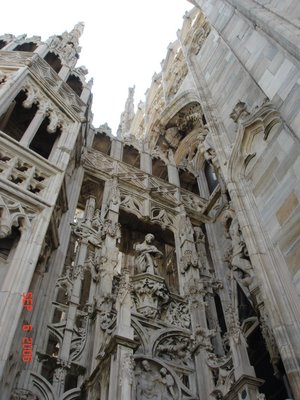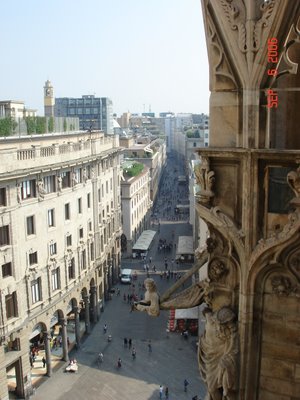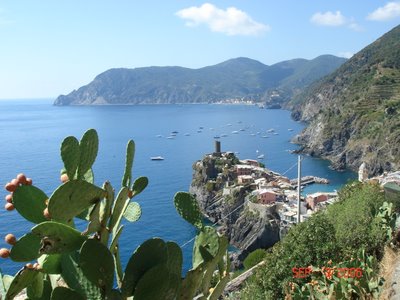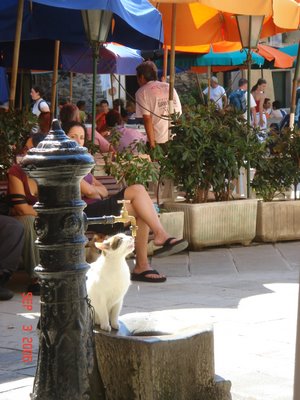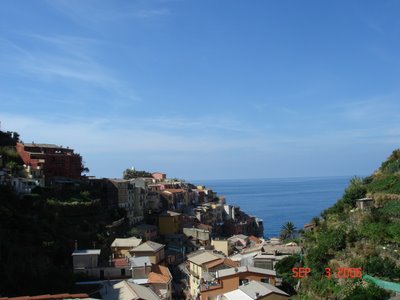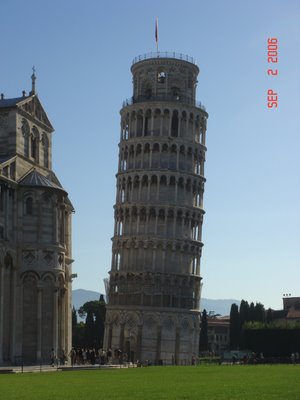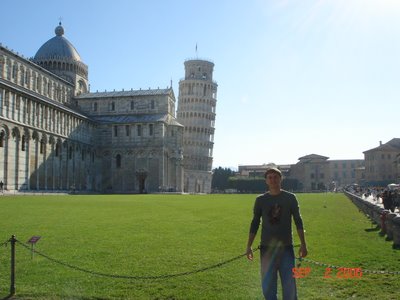Our second day in Cinque Terre started with a bang – several of them, actually. For whatever reason, one of the churches rings its bells for about three straight minutes every morning at 7:30. I suppose this is to wake up the town or mark the end of morning mass. In retrospect, the practice sounds like the quaint tradition of a small village whose life and livelihood once revolved around the church, but that morning it was just downright rude! We were on a vacation, after all, not a mission, and were no mood to wake at 7:30 to the clanging cacophony of church bells not more than 100 meters away. Despite a tiny population, there are two churches in the village. I am convinced the clergy there entertain themselves with dueling bell-tower concertos. Each hour brought a new tune.
Unable to fall back to sleep, we rolled out of bed and prepared ourselves for a long, difficult hike. For me, this included sliding on my thong sandals and downing a few slices of toast with juice. I didn’t know what Cinque Terre had in store for me.
By default, we chose to walk Via dell’Amore, the (not so) low path among the villages. Several other paths exist, but they all take you high into the mountainside. Our chosen route provided plenty of adventure and picturesque vantages for our purposes, but I give credit to those who might choose the more secluded, higher trails. Besides, Via dell’Amore, though the most direct path among all five villages, is something quite less than a straight line. They say you can hike from one end to the other in six hours, but we were in no hurry. With a name like “Lovers’ Lane”, I think it was meant to be more stroll and less sprint.
Of course, the idea of me walking a trail called Lovers’ Lane is kinda funny, because, let’s be serious here, I don’t quite qualify as a “lover” at this point. And even if I did, I'm not convinced that sweating through a day-long hike is the most romantic way to spend a vacation. I think this was a rare case of the area pandering to tourists. Whatever.
Anyway, the walk between Riomaggiore and Manarola, the next village, is by far the easiest, and with fresh legs we made it there pretty fast. Manarola is a lot like Riomaggiore, but a bit bigger. It sits on something of a bluff, and it seemed a popular place for tourists and locals to lay out on the rocks by the Sea. We had perfect weather that day – clear skies and warm sun – yet for whatever reason none of us got much of a tan. The sun just wasn’t very intense. We didn’t stick around Manarola long, as it was the first village on our trip, and we were eager to continue the hike. We did, however, snap a few good pictures, some of which makes this very amateur photographer rather proud!
*A side note on the pictures: clicking on one will open a larger version in a new window for better viewing.
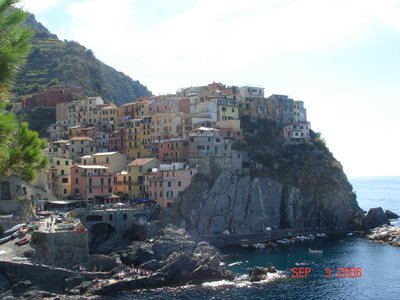 Manarola.
Manarola.
The trail to the third village, Corniglia, was only a bit more difficult than the first leg. Plus, there were fewer people on it. At one point, I turned around and snapped the picture below. If you look closely, you can see Manarola looking tiny just about dead center of the photograph. I think the sun bleached some of the color out of the picture (like I said, I’m only an amateur), which makes finding it difficult, but I promise the town really is that small compared to the surrounding hills!
 Manarola from a distance and dotting the point of the nearest protrusion in the photo.
Manarola from a distance and dotting the point of the nearest protrusion in the photo.
At the end of the trail between Manarola and Corniglia, we had to climb 400 stairs to reach the village. I thought this would be the most difficult part of the hike. I couldn’t have been more wrong! Both of the remaining legs were far more difficult and involved much larger changes in elevation.
We spent a little more time in Corniglia walking among a few small shops there. We also grabbed a bit to drink, as the midday sun was now beating down on us. The owner of one small wine shop must have been a big fan of socialist and communist regimes and dictators, because every label of wine portrayed a revolutionary or important leader of some sort. For example, he had several bottles of Che Guevara wine, along with other bottles celebrating Marx, Stalin, and Castro. I wish I had a picture, but you’ll have to settle with your own imagination. The shopkeeper, however, was hosting an impromptu midday dance party in his store with what I presume was his granddaughter. We all wanted to join in – he was bumpin’ some good music!
We finally came to the end of the one main street in Corniglia, a picture of which is posted below. The landing at the end of the road sits atop a cliff that leads straight down to the Sea. To get an idea of Corniglia’s size, notice the width of street in the picture, and bear in mind this is the main “thoroughfare” through the village.
 End of the road in Corniglia.
End of the road in Corniglia.
Refreshed from naturally chilled, mountain spring water that comes up in Corniglia through a series of taps, we hopped back on Via dell’Amore toward the fourth village. On the way, I snapped these parting pictures of Corniglia. Perhaps had I known that the trail ahead would be so difficult, I may have stayed in town a little longer!

Looking south from the trail, Corniglia.

Corniglia again, high above the Mediterranean.
